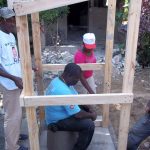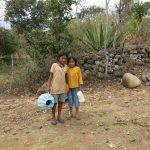The universal right to clean water and sanitation
All the people who live on Planet Earth have the right to clean water, with no contamination and in sufficient quantity, so as to meet nutritional and hygiene needs, which will allow us suitable health standards so that we can enjoy a decent life from infancy to old age. In the second decade of the 21st century, the availability of drinking water and sanitation installations managed in a secure way remain as the great challenges for Mankind. The lack of these breaches the Human Right to Water and Sanitation which is recognised in the historic resolution passed by the United Nations General Assembly in 2010.
As regards clean water, around 1,800 million people use seriously contaminated sources for their drinking water. What is more, it is not just a matter of quality, quantity is also affected: although freshwater reserves could meet the needs of the current population (including the geographical complexity of distribution) water shortages affect over 40% of the world’s population. All this will get worse unless steps are taken in time, especially with climate change in mind. Even worse is access to sanitation in the world, where about 2,400 million people lack this service, and don’t even have latrines, or what is called basic sanitation. If we add to this that 80% of water which has been used by humans is poured into continental water masses and the sea, the situation is truly dangerous.
These problems create huge geographical differences and inequality between countries, and these not only affect water and sanitation management in a strict sense, but also for so-called transversal aspects: health, gender equality, education, food and energy production, and ecosystems related to water and biological diversity.
In this context, the current temporary exhibition in the Virtual Museum of Human Ecology presents the 6 goals to be met by 2030 in objective 6 of the Sustainable Development Goals (SDG), using images or connected indicators, albeit from the personal view of the author, based on his experiences in international cooperation for water and sanitation. Each goal is illustrated with pictures of the projects on which the author has worked. The photos- both the author’s and others donated by different collaborators on the project- focus on the experience acquired over more than 10 years in managing international projects for the development of water and sanitation in Haiti, Mexico and Guatemala, for both the Spanish Red Cross and for the Foundation for Cooperation with Water and Sanitation (FCAS), part of the Agencia Española de Cooperación Internacional para el Desarrollo (AECID).
The author would like to express his special gratitude to those responsible for AECID, the Spanish Red Cross and ONGAWA (Engineering for Human Development) for allowing the use of material and data in the Virtual Museum.
José Luis Armayor Cachero has a Doctorate from the Universidad Politécnica de Madrid, and specialises in Civil Engineering (land and water), having over 32 years’ experience in the preparing and executing studies and projects for water and sanitation, including management and building of the infrastructure. He has also worked in the private sector and the Instituto Geológico y Minero de España (Spanish Mining and Geological Institute), in the field of Hydro-geology. He is currently working for Tragsatec (part of the Tragsa Group), in the Water Planning and Management Department, a company which is part and parcel of the Spanish Administration. His next work will again focus on Guatemala, where he will take part in a study on sustainability and improvement to water supplies in the metropolitan district of Valle de Ciudad de Guatemala, where over 5 million people are in danger of losing/or not having access to drinking water.






























